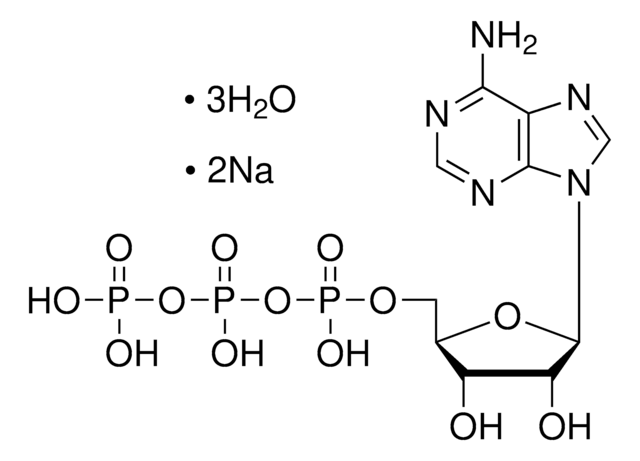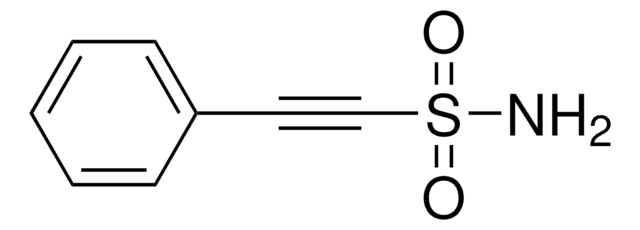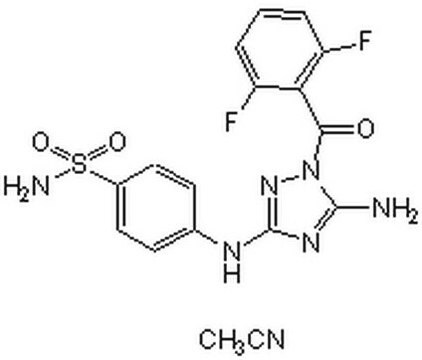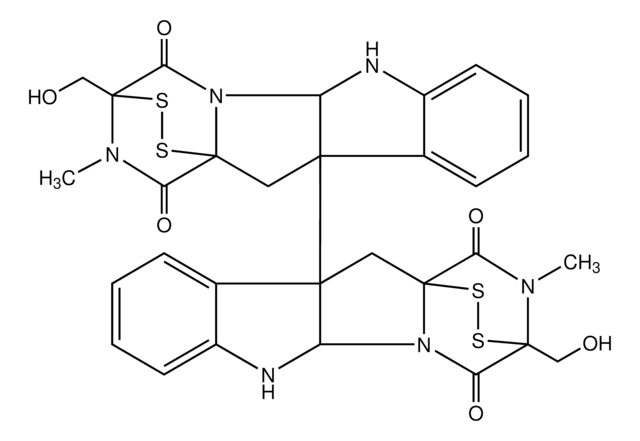C3249
CR8
≥95% (HPLC)
Sinónimos:
(2R)-2-[[9-(1-Methylethyl)-6-[[[4-(2-pyridinyl)phenyl]methyl]amino]-9H-purin-2-yl]amino]-butanol-1, (R)-2-(1-Hydroxybut-2-ylamino)-6-[4-(2-pyridyl)phenylmethylamino]-9-iso-propylpurine, C&R8
About This Item
Productos recomendados
Quality Level
assay
≥95% (HPLC)
form
powder
color
off-white
solubility
DMSO: ≥10 mg/mL
storage temp.
2-8°C
SMILES string
CC[C@H](CO)Nc1nc(NCc2ccc(cc2)-c3ccccn3)c4ncn(C(C)C)c4n1
InChI
1S/C24H29N7O/c1-4-19(14-32)28-24-29-22(21-23(30-24)31(15-27-21)16(2)3)26-13-17-8-10-18(11-9-17)20-7-5-6-12-25-20/h5-12,15-16,19,32H,4,13-14H2,1-3H3,(H2,26,28,29,30)/t19-/m1/s1
InChI key
HOCBJBNQIQQQGT-LJQANCHMSA-N
Biochem/physiol Actions
Features and Benefits
Storage Class
11 - Combustible Solids
wgk_germany
WGK 3
flash_point_f
Not applicable
flash_point_c
Not applicable
Elija entre una de las versiones más recientes:
Certificados de análisis (COA)
¿No ve la versión correcta?
Si necesita una versión concreta, puede buscar un certificado específico por el número de lote.
¿Ya tiene este producto?
Encuentre la documentación para los productos que ha comprado recientemente en la Biblioteca de documentos.
Artículos
Cyclin dependent kinases (CDKs) are typical serine/threonine kinases that display the 11 subdomains shared by all kinases. The complete sequence of the Homo sapiens genome shows that among the ~30,000 predicted genes, there are 13 CDKs and 25 cyclins. Eleven CDKS and their associated cyclins have been characterized in man.
Nuestro equipo de científicos tiene experiencia en todas las áreas de investigación: Ciencias de la vida, Ciencia de los materiales, Síntesis química, Cromatografía, Analítica y muchas otras.
Póngase en contacto con el Servicio técnico







